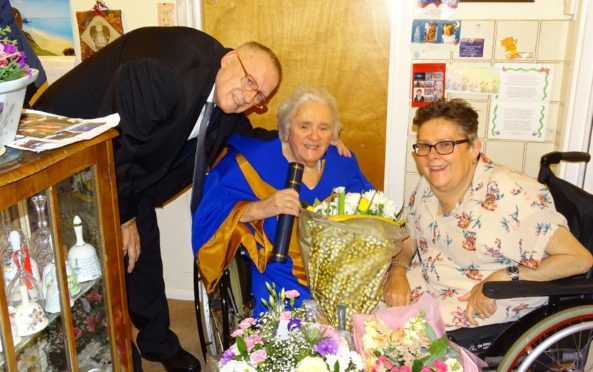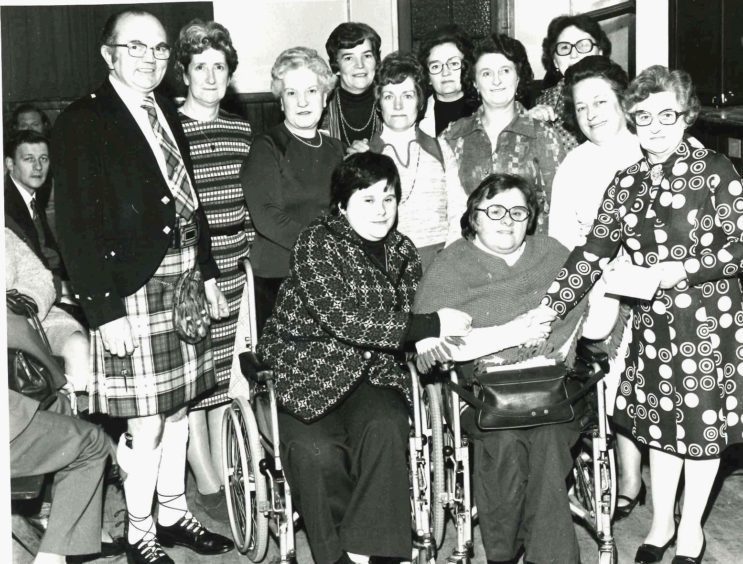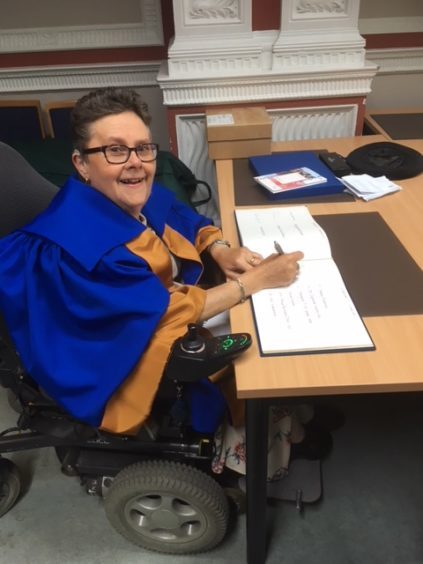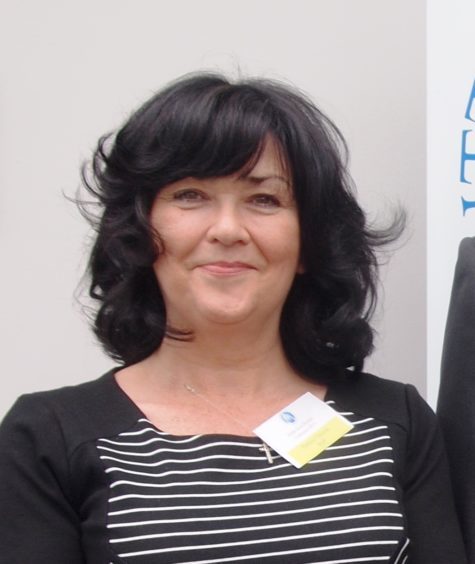As Dundee’s Brittle Bone Society celebrates its 50th anniversary, Caroline Lindsay finds out more about this rare lifelong condition and the society’s remarkable founder.
Since her birth in 1961 Yvonne Grant has endured more than 450 fractures. Even turning in bed, sneezing or lifting a cooking pot can cause her fragile bones to break.
Yvonne was born with osteogenesis imperfecta (OI), also known as brittle bone disease.
OI is a disorder of collagen, a protein which forms the framework for the bone structure. In OI the collagen may be of poor quality, or there just may not be enough to support the mineral structure of the bones. This makes the bones weak and fragile and results in the bones being liable to fracture at any time, even without trauma.
OI is a rare condition and it’s estimated the number of people born with the condition is approximately 1 in every 15,000: that equates to around 5000 individuals in the UK living with brittle bone disease.
Yvonne was diagnosed when she was 11 months old after she broke her leg.
“Fractures from OI give you no warning, although my eyes go a deeper shade of blue and I get very tired,” she says.
“The orthopaedic doctors and surgeons I saw as a child told me I could walk but then I fractured right before their eyes during clinic. Calipers got me up and able to take a few steps but I was never able to walk the length of the lobby,” she continues.
“When I was 17 I decided I’d had enough of struggling with mobility and opted for life in a wheelchair and in safety, although my parents continued to encourage me to walk with crutches when I could.”
Yvonne took morning classes at Abertay University and enrolled for a degree in information management.
“I was over the moon when I gained my degree and needless to say Mum, Dad and the rest of the family were jumping for joy,” she smiles.
Yvonne’s mum, Margaret Grant, was the founder of Dundee’s Brittle Bone Society which is celebrating its 50th anniversary this week with a scientific symposium incorporating History Bones, an exhibition shortly to be on display at the city library in the Wellgate Centre.
Margaret, born in 1933 with OI, was aware there was no support for people with the condition and that many medical professionals knew little or nothing about diagnosing and treating the condition.
When her daughter Yvonne was born in 1961 very little had changed, and she set about changing this with the creation of the Brittle Bone Society.
Now based in Guthrie Street, the society began in a small house in Byron Crescent.
“Dad worked in the jute trade – they were on short time so finances were hard, and there were no benefits or support system,” Yvonne recalls.
“Mum put an article in a local newspaper and the rest as they say is history.
“Over the past 50 years as we drove the many miles to and from Dundee all over the country, establishing a network of people who had children or families affected by this little known condition.
“I’ve made many lifetime friends not only with the condition and now we are internationally recognised,” she smiles.
“It’s wonderful that an organization founded here in Dundee 50 years ago is still thriving.”
Patricia Osborne has been CEO of the society for the past nine years. “I never ceased to be amazed at the tenacity and success of Margaret Grant,” she reflects.
“Long before computers, email and social media, Margaret managed to make a huge impact in the world of rare disease. She helped fundraise £342k from a TV Magpie appeal – the equivalent of £2.1 million in today’s money.
“She campaigned for equality and won. And besides that she found time to write personal letters and notes to families who depended on her so much.
“She is held in such high esteem and genuine affection – it’s quite a legacy and we’re carrying on what Margaret started.”
The scientific symposium, which runs August 17-20, will see families from all over the country, and international healthcare professionals, converging on the Apex City Quay Hotel for a weekend of celebrations. One special guest will be former Magpie presenter Jenny Hanley.
“I am so looking forward to catching up with all the people I first met so long ago concerned with the Brittle Bone Society, especially Margaret Grant and family who have become firm friends,” enthuses Jenny.
“It’s stunning to think how much good can be done with the right people in the right place. The Magpie appeal was able to explain, explore, and extend the knowledge, between all ages, of how different lives are lived. Without the huge generosity of Magpie’s wonderful viewers our appeals would not have been so successful. All of us concerned, I am sure, are just so proud that we could help.”
The History Bones exhibition will tell the story of the development of the Brittle Bone Society, and the medical developments and treatments over the years for OI and will be on display at the City Library from August 21.
“We have various items on display: photographs, banners with themes that chart the decades, and you can see what treatment was like, what medical procedures were available, and some unbelievable clinical trials,” says Patricia.
“There are some quite uncomfortable looking health aids and some fascinating items like ‘space suits’ designed by NASA that children with fragile bones were encouraged to wear to protect their bones.
“People will see how the language has changed and the rights of people with disabilities have improved,” she continues.
“We’ve come an awfully long way in 50 years in terms of promoting awareness of OI supporting those with, or affected by, the condition – but there is still much to done.”













